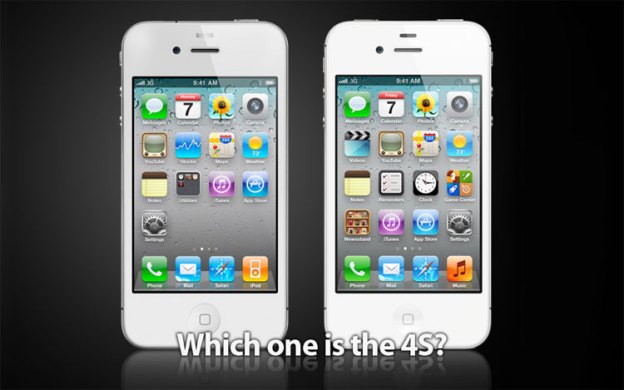
Today was Apple’s big day. Nokia, Microsoft, Google… they’ve all been holding off their phone announcements to see what Apple is cooking up for the holidays. After all, Apple hasn’t updated the iPhone for almost a year and a half, and with Tim Cook now officially at the helm, you’d think the company would want to prove itself. Well, not so much. Instead of a new iPhone 5, we got the iPhone 4S, which is nearly identical in design to the iPhone 4 except it has a better camera, a voice control app named Siri, and a dual-core processor. Yep, that’s it.
iCloud and voice control, OK…what else is new?

Really, this is one of Apple’s better years, software-wise. The company is launching the ambitious iCloud project and iOS 5 has some nice enhancements (though we’re wondering where the rumored Facebook integration went). Hell, even Apple’s card creating app, which lets you design a card for someone and then send it through Apple’s system, is pretty neat. Most of all, this Siri voice command system, assuming it works, could turn the industry on its head (assuming it works as well as advertised).
Still, there aren’t a lot of new ideas here. Android has had voice control for a couple years and already has Facebook and Twitter integration. On the GPS side of the equation, Apple’s new app to find your friends and family is interesting, but Google Latitude has had the ability to track your friends and family for years as well. Notification tray? Android has had it since the beginning. Several Android phones have photo and video editors as well. iCloud is the most promising of Apple’s innovations, but it shouldn’t have to carry the whole brand.
Though Apple showed a lot of software innovation, it takes more than software to excite the masses. And on the hardware front, Apple didn’t deliver…at all. Granted, the 4S has a few notable hardware upgrades. It has an 8-megapixel camera and a dual-core processor, which is up from a 5-megapixel camera and single-core processor, but Android phones have been sporting these features all year. The Samsung Galaxy S II, which came out this weekend, likely has a dual-core processor that meets or exceeds the 4S.
And we can’t forget about 4G. Though the iPhone is now available on Verizon and Sprint, it is already a second-rate device on both, failing to take advantage of Verizon’s LTE network and Sprint’s WiMax network. Apple still seems to have chained its progress to AT&T, which is a year behind Verizon in deploying its 4G network. It is hard to recommend an iPhone on Verizon when the carrier’s 4G network is already running great Android phones like the Droid Bionic.
‘S’ is for ‘Same’
If I had to guess, I’d say that the ‘S’ in iPhone 4S stands for “Same.” Apple’s new iPhone looks identical to the iPhone 4. Millions will buy it, no doubt, but the explosive desire to upgrade may not be there like it was with the iPhone 4 because it’s just not exciting to look at. I hate to say it, but half of the fun of upgrading early is having the cool new phone. You can’t have a hot new phone that looks exactly like last year’s phone. The iPhone 4S may be new, but its design is 16 months old. If I bought one and walked around with it, you’d think I had an iPhone 4. Many will claim that this means nothing to them, but Apple is a company that is built on beautiful hardware designs. This time we didn’t get one, and that is disappointing.
Sixteen months is a long time. Every other manufacturer has had more than a year to make their phones just as thin and sexy as Apple’s design, and they’ve been working their asses off to catch up and compete. Before the end of the year, we’ll see Android phones with higher resolutions than the iPhone’s Retina display. Apple could have done nothing but put a brushed metal back on the phone, and changed the shape of the volume keys and everyone would be excited, but it didn’t even do that. Everything looks identical. Sadly, it chose to put profits first and re-release the same phone it did 16 months ago, as if it still has no competition. Unfortunately, it does.
Times have changed in the last year. Apple is no longer the only serious player. Screens have gotten larger, face buttons are disappearing, and the entire market has reacted and taught itself to out-Apple Apple. Sadly, while the rest are rising, Apple is staying. It has always been a year or two ahead of the competition, but now we may see it begin to fall behind for the first time.
Savvy or stupid?
If Samsung, HTC, or Motorola come out with new phones that merely meet the market standards, that’s okay. Apple re-invented the smartphone market five years ago. It’s sad to see it sit this round out while the competition continues to pound at its door. There isn’t a good excuse for leaving the iPhone 4 design unchanged after all this time. Well, maybe one excuse. Money. Let’s hope Tim Cook has done the math correctly.


